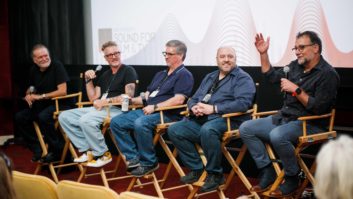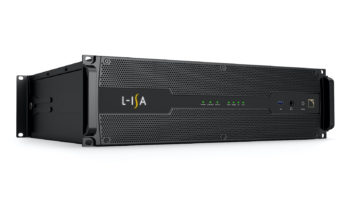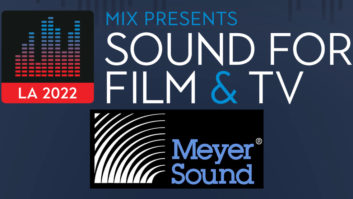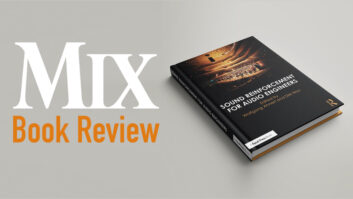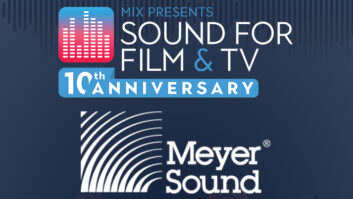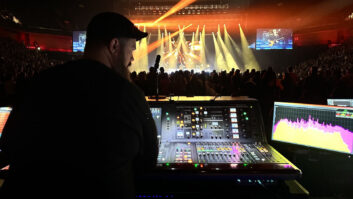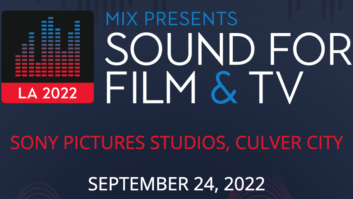As American as motherhood, apple pie and the Office of the Independent Counsel, the Boston Pops made its first appearance in July 1885, when a large and fashionable crowd filled the Boston Music Hall for the first Music Hall Promenade Concert. Conceived by Boston Symphony Orchestra (BSO) founder Henry Lee Higginson, the new series aimed to re-create the ambiance of summer evening concerts in Vienna, where Higginson had been a music student. Another goal was to provide summer employment for the members of the Boston Symphony.
Nearly 114 years later, the history of the Boston Pops contains dozens of “firsts.” For example, under conductor Arthur Fiedler, the Pops recorded the first orchestral record to sell more than a million copies, and the Pops’ special bicentennial program on July 4, 1976, drew an audience of 400,000, the biggest in the history of orchestral concerts. The commercial and popular success of the Boston Pops has not gone unnoticed-today symphony orchestras all over the country offer “Pops” programs, often as part of a marketing campaign to sell season tickets. And for many orchestras, a 4th of July pops program that incorporates a popular guest artist, the “1812 Overture” and a fireworks display helps to underwrite less well-attended performances. Since few (if any) orchestras maintain a full-time sound crew, they generally rely on regional sound companies and independent engineers. To gain insight into the problems of amplifying a symphony orchestra, Mix spoke with BSO live mix engineer Steve Colby.
Colby started out as a New England Conservatory clarinet student. While working in the school’s recording studio, he was introduced to the WCRB group that recorded the BSO for radio syndication. This led to stints as a live radio mix engineer for the BSO’s Tanglewood broadcasts, and for the New York Philharmonic radio series. Colby has also mixed for TV and radio for artists as diverse as Aerosmith and the Atlanta Symphony. After eight years with Boston’s PBS station, WGBH, Colby founded Evening Audio Consultants, which specializes in remote production and orchestral sound reinforcement. When the BSO began performing in arenas and on outdoor stages, he was a natural choice to step into the role of mixing them live. Colby has now been an FOH engineer for the Pops for nearly two decades. A veteran of literally hundreds of shows, Colby has developed an approach driven by practical necessity; he must often work with local sound companies whose inventory is geared toward more typical live concert productions.
Perhaps the primary challenge Colby faces is miking the orchestra. Approaches for miking symphony orchestras run the gamut from a well-placed stereo pickup to placing a mic on every instrument. Colby’s method incorporates a multi-miking scheme with a planned measure of controlled bleed between sections. This approach, says Colby, helps create a sense of depth and stage perspective, while also allowing for rebalancing. It also provides superior gain before feedback.
“I’ve fielded a lot of questions from people who don’t understand why a stereo pair isn’t the best way to go,” says Colby. He doesn’t dispute the argument that the fewer microphones used, the truer the phase relationship. “However, given the challenging acoustics of large arenas and outdoor venues, we’ve found that the orchestra needs a fair measure of rebalancing over the course of a program,” he explains. “A lot of dynamic adjustments are made by the players as they get used to their stage environment. Some of it also boils down to a brute gain issue—if you need to get loud enough to overcome a noisy air handling system or a ball park with chatty patrons, you need more microphones placed closer to the sound source.”
Since so many of the Boston Pops events are “one-offs,” Colby has developed a mic list that conforms to what most good regional P.A. companies have in their standard inventory, or can easily rent locally. “While I would always prefer using a stage full of Schoeps condensers, the quantities needed of those excellent microphones are frequently not available, or are beyond the resources of the event,” Colby explains.
MIC CHOICE AND PLACEMENT
Colby’s microphone setup generally relies on one microphone model per section. “Within the violins, violas and cellos, my favorite has emerged as the Shure SM81 because of its consistency and directional characteristics,” says Colby. “It almost acts like a short-throw shotgun, letting me place the mic a little farther away from the instruments without giving up a lot of isolation. Most classical instruments sound better with the mic at a distance of several feet, not several inches. It gives the sound a little room to breathe.” Other acceptable mics for these sections include AKG 535 and 451 models.
Colby mikes the first violins from behind, with the microphone extending over the shoulders of the players and aimed at a spot equidistant from the two instruments occupying that “stand” (two players share a single music stand). The mic is typically placed two feet above the heads of the musicians and carefully positioned to avoid being struck by a bow during the performance. “This position produces a warm sound that’s somewhat direct without a lot of upper-midrange screech that needs to be EQ’d out,” offers Colby.
Second violins are miked at a similar distance and angle, but from the front of the instruments. “This works out well for a couple of reasons,” Colby explains. “It allows me to have a diversity of string tonality within that section, which makes the overall violin sound a little more three-dimensional. It also helps balance when the seconds play a musical line that is lower in range.” Having the mics pointing more directly at the seconds helps to bring out the details of the orchestration. “It’s kind of a self-mixing technique,” adds Colby.
Violas are also miked from behind and slightly upstage. Since the viola section sits stage-right of the conductor, the top of the instruments face more directly toward the microphones, which helps to increase their presence. “Violas are problematic because they have a lower, darker tone, and it’s hard to bring them out in the mix, but they’re very important,” Colby continues. “They often act as a sonic glue for the string section. They’re sort of like the high-mids in a four-way system.”
Cellos are generally miked with a short boom reaching under the music stand in front of two players, with the mic about two feet from a point between the pair. “I actually prefer a cello miked from above, but it doesn’t turn out to be practical,” comments Colby. “The extra gain and presence win out over sonic superiority in this case.”
Colby’s favorite mic on basses is the AKG 414 set on a cardioid pattern, one per stand, again reaching under the music stand and positioned at the height of the instrument’s F-hole. Colby notes that placing the microphone at this height yields a good blend of bass “thump” and detail, reducing the need for radical EQ.
WOODWINDS AND BRASS
Typically, the woodwinds sit in two rows at the center of the stage, just upstage of the conductor’s podium. Colby places a Sennheiser 421 between the first two players of each woodwind type-flutes, clarinets, oboes, bassoons-with a fifth mic to accent the low-pitched English horn. Piccolo flute, bass clarinet and contra bassoon are generally left unmiked and are picked up as bleed into other nearby microphones, a technique that helps give the sonic impression of depth.
French horns sit just behind the woodwinds, while the remainder of the brass section-trumpets, trombones and tuba-occupy two rows in the upstage left corner of the stage. Here, Colby’s favorite setup is 414s all around, but more frequently he’ll use two Sennheiser MD-409s to cover four trumpets, plus a pair of 421s on trombones and a Shure SM57 above the tuba, less than a foot from the bell. “I’ve really gone ‘around the barn’ on mic selection for French horns,” says Colby. “For now I’ve settled on a pair of EV RE-20s set on the drum riser behind the section. These mics are only used occasionally in the mix to add presence to a particular musical passage. Most of the rich horn sound comes from bleed into the woodwind mics.”
For the harp, Colby eschews the use of a contact mic and usually points an 81 or a 451 at the middle of the soundboard, orienting the mic away from the timpani, which is a loud neighbor. “I haven’t really had the harp problems I’ve heard others talk about,” Colby comments, though he notes that the harp is one of the few instruments on which he uses a compressor, limiting its dynamic range to allow more control in the mix. “The harp is a wily instrument dynamically,” Colby explains. “Without gentle compression, certain notes pop out more than you want, while the rich low notes can almost disappear.” Colby uses no more than a 3:1 ratio and likes to see 2 to 4 dB of reduction on a good passage. Similar compression is used on the “Mr. Rogers” bell tones of the celeste, as well as on the pitched percussion mics; percussionists often play “toys” (triangle, whistles, sleigh bells, etc.) close to these mics, which are set up for the more distant mallet instruments.
The percussion section is spread out in the upstage right corner. Colby uses condensers on percussion, and it’s one of the few places where he prefers AKG 451s, with one per pitched (mallet) instrument. “I mike from above, at about seven feet, over the low end of the instrument and aimed toward the high end,” he explains. Another 451 is set up for the “toys.” Colby covers the four timpani with two SM57s on short booms, each mic pointing down between a pair of drums from about 18 inches. “They lend a nice, warm presence and are not in the player’s way,” Colby notes. What is called the battery (the concert snare and bass drum), doesn’t need a mic, since these instruments bleed into many other inputs. “The string mics are great for providing a sense of distance for the battery,” says Colby.
Typically, Colby leaves roll-off switches on the microphones flat and makes adjustments at the board. “A real rookie mistake that I used to make was setting the highpass filters too high out of concern for feedback,” Colby comments. “There’s a wonderful wash of energy onstage that is useful to thicken out the orchestra. You’re going to get some bleed anyway, so you want it to make a fidelity contribution to the mix.”
At the board, Colby sets highpass cuts at 60 Hz on violin mics, with 40 and 50 Hz cuts for celli and double bass mics, depending on the choice of mic and the P.A.’s response in the room. He sets highpass filters on the harp at 100 Hz, woodwinds and trumpets at 80 Hz, and trombones at 50 Hz. Tuba and timpani are cut down at 25 Hz, pitched percussion at 80 Hz.
One of the ways in which the Pops differs from a traditional orchestra is the presence of a rhythm section located upstage center, including a drum kit, bass and keyboards, often augmented with a guitar and synthesizer. For piano, Colby uses a single SM81 in the middle of the piano pointing back at the hammers, plus a Barcus Berry Planar Wave piano pickup. “Where the piano is so close to the drum kit, [the pickup] helps with isolation,” he explains. The kit is miked simply, with a single overhead condenser pointed at the drummer’s right knee and a 57 on the kick placed on the pedal side. The electric bass and synth are run through DIs, and the guitar is miked with a 57 on the amp.
LOST WITHOUT COOPERATION
To keep the stage neat and safe with this large number of microphones, Colby limits the number of cable paths to a minimum and lays down a lot of gaffer’s tape after the line check. All the string section mic cables, as well as the majority of the mic stand bases, are placed in a stage-wide alley that exists within the body of the string section. Even so, Colby notes, he would be lost without the cooperation of the musicians. “Our players are quite gracious about looking after mic placement, because the stage setup often gets shuffled during the last five minutes before show time,” Colby comments. “They’re aware of the technical difficulty our show presents and will tug a mic back into position if they have to shift their chair. It’s not a bad idea to briefly introduce the musicians to their mics and indicate the correct position as you’re checking the stage.”
On a Pops tour, the nearest thing to a soundcheck is often a short rehearsal before the first show of the run. Colby starts by listening to the orchestra with the P.A. turned off to see how the venue acoustics treat the natural sound of the orchestra. “We are in the ‘reinforcement’ business here,” he comments. “Our strategy is to augment and complement the basic sound of the orchestra whenever possible.” Next, he starts creeping up one section at a time, beginning with the strings. “I want to put up the microphones that will present the most severe ‘washout’ first, and then I can fill in the detail of everything else around that,” Colby explains. “It’s the same philosophy as getting a rock drum sound together with the lead vocal mic open-using the onstage bleed to create the overall sound.”
Input gain settings are critical. “I’m one for driving a console at its sweet spot and then making adjustments after the desk,” Colby remarks. He hears the same warmth in the woodwinds and strings when the desk is correctly trimmed that other engineers can hear in their lead singer when the vocal channel is opened up optimally.
Colby’s most frequent equalization adjustment is to the high-mids on the violin mics. “Temperature and humidity play a role with any wooden instrument, plus the players tend to dig in a little more if they can’t hear well, and this can contribute to a harshness of string sound,” he says. For this important adjustment, Colby usually dips out 3 to 6 dB between 800 Hz and 2 kHz. He uses wide filters because he finds they sound more musical and natural.
On the low strings (celli and basses), Colby often finds that there is an unwanted 400Hz sweet spot. “I think it may have to do with the fact that the orchestra is sitting on a 40 by 60 hollow platform,” he explains. “This is another place where a little high end can add some detail.” On the woodwinds, he often ends up taking a little 300 Hz out and putting in a little articulation bump between 5 and 6 kHz, especially when using 421s. This lets him run the section a little softer, but still reveals detail in subtle woodwind lines.
The ability to mix in a way that highlights the subtle nuances of specific instruments is one of the benefits of amplifying orchestral music. The other, main advantage, of course, is the power to bring symphonic music to a new audience. Though there’s obviously some crossover, the folks who go to Pops concerts in a park or shed are not always the same people who frequent concert halls. The BSO’s Pops programs blazed the trail for symphonies all over the country, giving them a way to reach new fans by playing old favorites.

